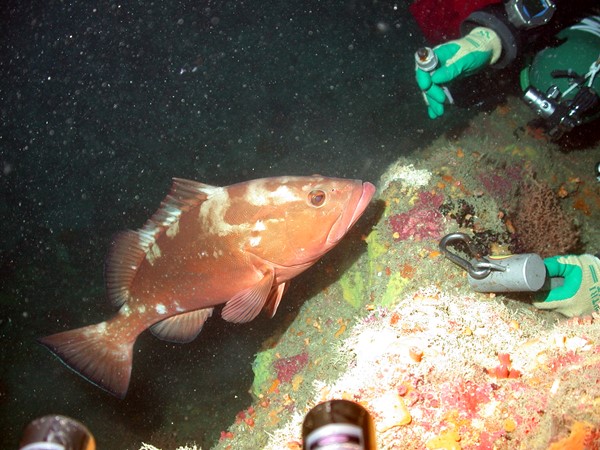
Ecosystem Engineers
"Overfishing is a major environmental problem in the oceans. In addition to the direct loss of the exploited species, the very act of fishing, particularly with mobile bottom gear, destroys habitat and ultimately results in the loss of biodiversity. Furthermore, overfishing can create trophic cascades in marine communities that cause similar declines in species richness.
These effects are compounded by indirect effects on habitat that occur through removal of ecological or ecosystem engineers. Mass removal of species that restructure the architecture of habitat and thus increase its complexity or influence the biogeochemistry of sediments could have devastating effects on local biodiversity and important water-sediment processes. The possible overexploitation of engineering species requires more attention because the consequences extend beyond their own decline to affect the rest of the ecosystem. This is particularly problematic in the deep ocean, where oil and gas exploration and fishing pressure are likely to increase."
Coleman & Williams 2002 Trends in Ecology and Evolution
An ecosystem engineer is an organism that either by virtue of its morphology or its behavior creates more complex habitat that enhances biological diversity where these organisms occur. Although we suspect that the marine fishes that we study are in fact ecosystem engineers, we use the term “habitat engineer” instead because the spatial scale of the effect is currently unknown. This includes Red Grouper (Epinephelus morio), Goliath Grouper (Epinephelus itajara), and Golden Tilefish (Lopholatilus chamaelonticeps).
Red Grouper, for instance, actively remove sediment and other debris from the limestone solution holes they occupy in waters ranging in depth from 3 to 83 m (6-250 feet), using their mouth as well as their caudal fin to sweep the hardbottom surfaces clean. By exposing hard substrate, they create settlement sites for sponges, corals, anemones, and other sessile species while creating a refuge for others. Biological diversity is enhanced both in terms of species number and trophic groups – including a number of small “cleaner” shrimp and fish that remove parasites from larger fish such as grouper, sharks and sea turtles. Also increased is the total number of organisms. The larger the hole, the greater the effect. Given that Red Grouper is a major predator on crustaceans and slow-moving fishes (as is Goliath Grouper), they may be having a huge influence on the species that live there by protecting some from smaller predators that are food for groupers. Closer study of the interactions between these habitat engineers and the other species associated with their holes or burrows will reveal the level of interdependence in their communities.

